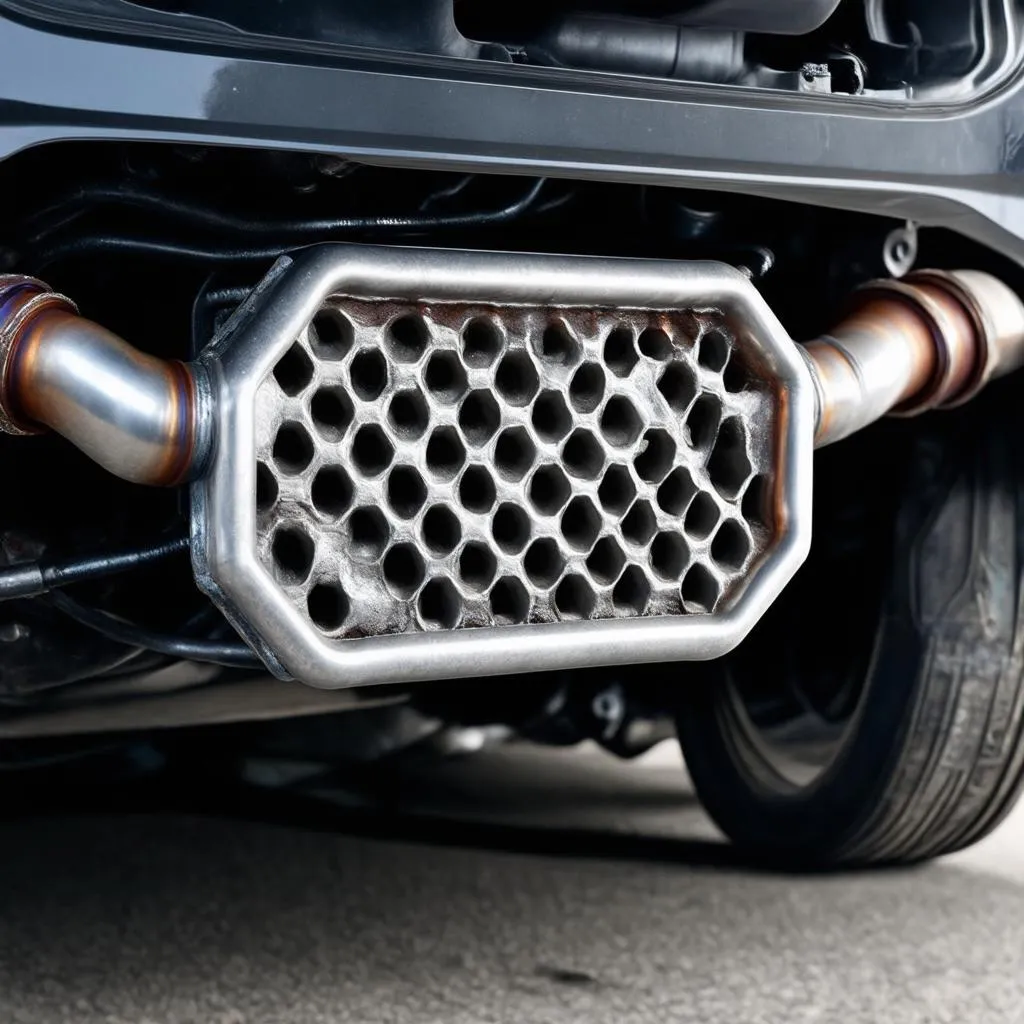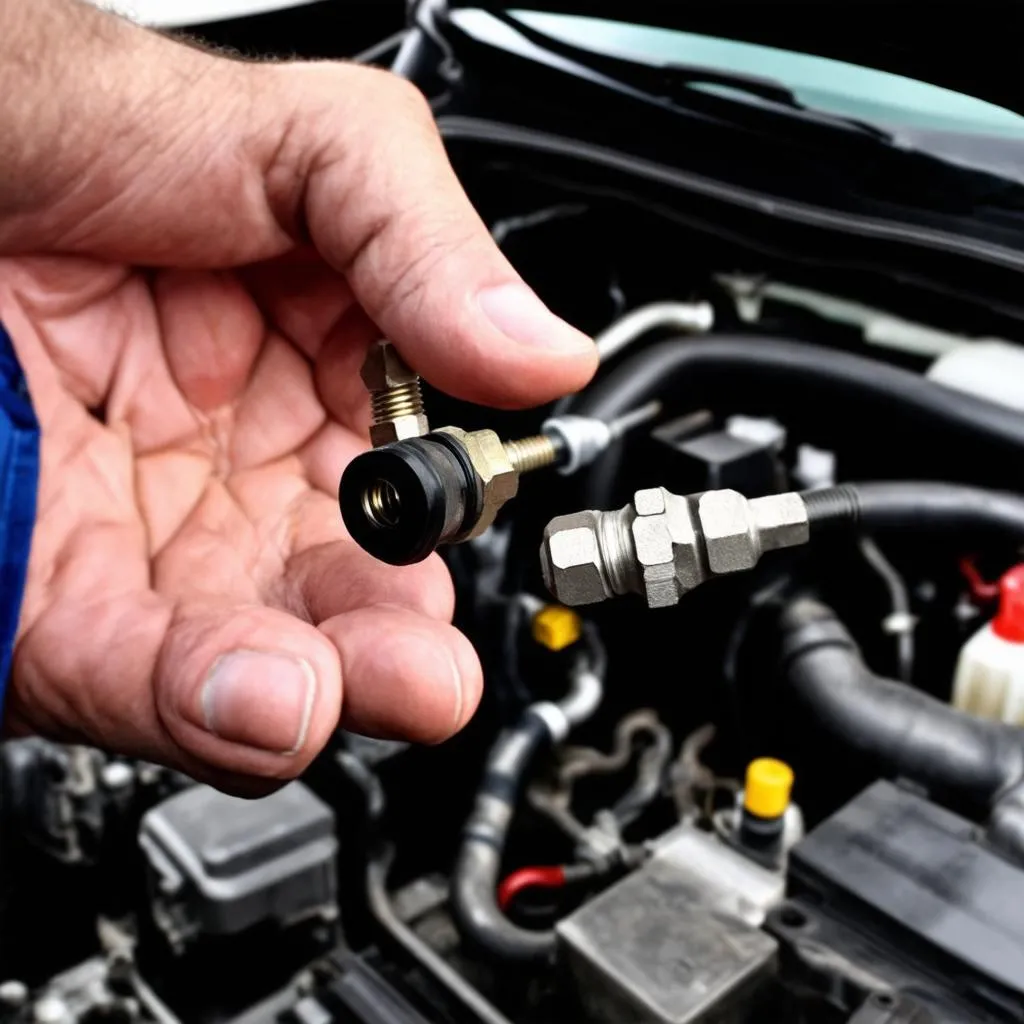“A penny for your thoughts,” my grandfather used to say, peering under the hood of his beat-up pickup. “But this,” he’d gesture with a wrench, “this’ll cost you a whole lot more.” He wasn’t wrong. Car troubles, especially those cryptic dashboard warnings, can feel like a drain on both your wallet and your peace of mind.
One such warning that often leaves car owners scratching their heads is the dreaded P0420 Obd Trouble Code. What does it mean? Is it a quick fix or a sign of a bigger problem? Don’t worry, you’re in the right place. In this article, we’ll demystify the P0420 code, exploring its potential causes, solutions, and even touch upon some interesting connections to the psychology of car maintenance.
Deciphering the P0420 Code: Catalyst System Efficiency Below Threshold (Bank 1)
In simple terms, the P0420 code indicates that your car’s catalytic converter isn’t working as efficiently as it should. More specifically, it refers to “Bank 1” of your engine, which usually signifies the side containing cylinder #1.
But what does that actually mean? Imagine the catalytic converter as your car’s internal “air purifier.” It converts harmful exhaust gases into less harmful substances before releasing them into the environment. When the P0420 code pops up, it’s like the converter is whispering, “Hey, I’m not cleaning the air as effectively as I should be.”
Possible Causes and Solutions: A Holistic Approach
Just like a doctor wouldn’t prescribe medicine without a diagnosis, we need to investigate the root cause of the P0420 code before attempting a fix. Here are some common culprits:
1. Faulty Oxygen Sensors: These sensors, located before and after the catalytic converter, measure the oxygen content in the exhaust stream. A malfunctioning sensor can send incorrect readings to the car’s computer, triggering the P0420 code even if the converter is fine.
2. Failing Catalytic Converter: This is the most dreaded (and often most expensive) possibility. Over time, the internal honeycomb structure of the converter can wear out or become contaminated, reducing its efficiency.
3. Exhaust Leaks: Leaks in your exhaust system, especially before the catalytic converter, can disrupt the oxygen sensor readings and trigger the code.
4. Engine Misfires: If your engine misfires, unburnt fuel can enter the exhaust system, overwhelming the catalytic converter and potentially damaging it.
5. Low-Quality Fuel: Using fuel that doesn’t meet your car’s specifications can lead to a buildup of deposits in the catalytic converter, affecting its efficiency.
Dr. Emily Carter, a renowned automotive engineer, emphasizes the importance of a thorough diagnosis in her book “The Heart of Your Car”: “Treating the symptom without addressing the root cause is like putting a bandage on a broken bone. It might hide the problem temporarily, but it won’t make it go away.”
Dealing with the P0420: From Simple Fixes to Major Repairs
The solution to your P0420 problem will depend on the underlying cause. Sometimes, a simple fix like replacing a faulty oxygen sensor can do the trick. Other times, a more significant repair like replacing the catalytic converter might be necessary.
It’s crucial to address this issue promptly. Ignoring the P0420 code can lead to further damage to your car’s emission system, reduced fuel efficiency, and even cause your car to fail an emissions test.
The P0420 Code and the Psychology of Car Maintenance
Interestingly, the P0420 code, and car troubles in general, can reveal a lot about our relationship with our vehicles. Some people are proactive, addressing issues at the first sign of trouble. Others, perhaps driven by fear or a lack of knowledge, tend to ignore warning signs until they escalate into major problems.
Just like in life, a little preventative care can go a long way in ensuring your car (and your peace of mind) stay in top shape. Regular maintenance, using high-quality fuel, and addressing minor issues promptly can prevent many problems down the road.
FAQs about the P0420 Code
Here are some common questions people ask about the P0420 OBD code:
Q: Can I still drive my car with a P0420 code?
A: While you might be able to drive for a short period, it’s not recommended. Ignoring the code can lead to further damage and potentially leave you stranded.
Q: How much does it cost to fix a P0420 code?
A: The cost can range from a few hundred dollars for a simple oxygen sensor replacement to over a thousand dollars for a new catalytic converter.
Q: Can a bad gas cap cause a P0420 code?
A: While a loose gas cap can trigger other codes related to the evaporative emissions system, it’s unlikely to cause a P0420.
 Car Catalytic Converter
Car Catalytic Converter
Beyond the P0420: Exploring Other Automotive Mysteries
While the P0420 code might be a common visitor to the world of car troubles, it’s just one of many issues you might encounter as a car owner. To help you navigate the complexities of car maintenance, here are some other topics you might find helpful:
- Understanding OBD Codes: A Beginner’s Guide
- Dodge Journey 2013 Common OBD Issues
- F150: Pulling ECU Strategy Code With OBD Bluetooth
 Car Oxygen Sensor
Car Oxygen Sensor
Need Expert Help? We’re Just a Message Away!
Dealing with car troubles can be frustrating, but you don’t have to face them alone. If you’re struggling with a P0420 code or any other automotive issue, our team of expert mechanics is here to help. Contact us on WhatsApp at +84767531508 for 24/7 support and guidance on diagnostic tools and repair solutions.
Remember, a well-maintained car is a happy car!